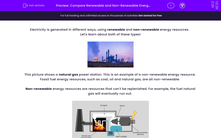Electricity is generated in different ways, using renewable and non-renewable energy resources.
Let's learn about both of these types!

This picture shows a natural gas power station. This is an example of a non-renewable energy resource.
Fossil fuel energy resources, such as coal, oil and natural gas, are all non-renewable.
Non-renewable energy resources are resources that can't be replenished. For example, the fuel natural gas will eventually run out.
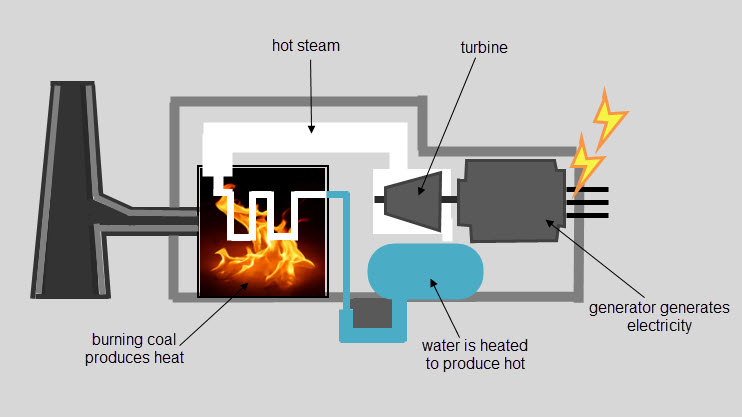
This diagram shows how a coal power station works. Coal is burned, and the heat energy released heats water, boiling it and turning it into high-pressure steam.
The steam turns a turbine, and the turbine turns a generator. The generator converts the kinetic energy (movement energy) into electrical energy.
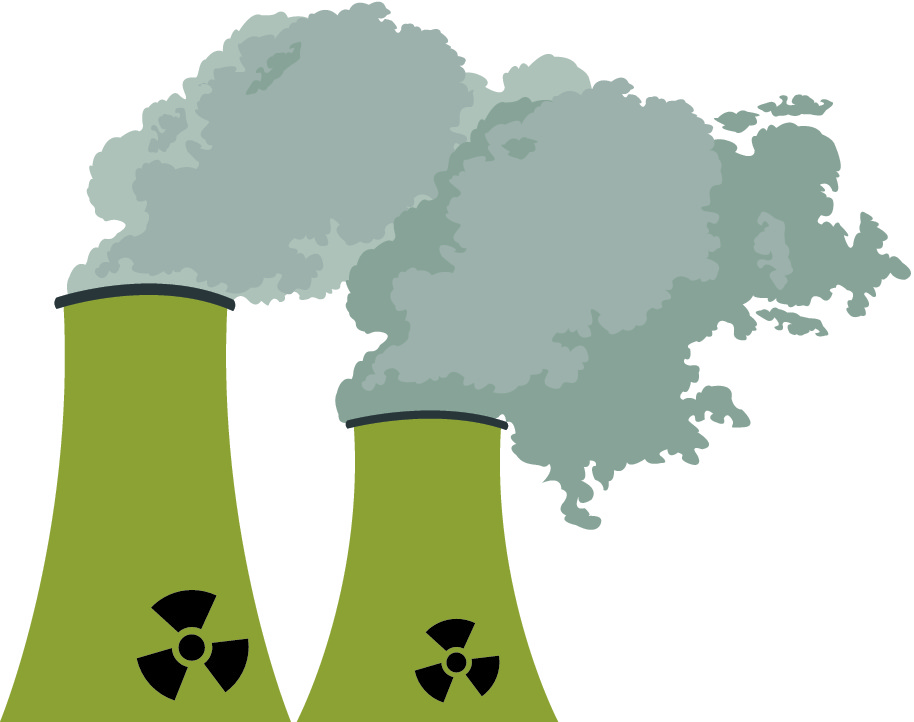
Nuclear power is another non-renewable resource, but it isn't running out as quickly as fossil fuels. Nuclear power stations are powered by nuclear reactions instead of burning fuels.
Non-renewable energy resources have advantages and disadvantages. Here are some examples.
Advantages
1. It is reliable - the power supply is constant and not affected by factors like the weather.
2. The amount of energy stored in the fuels is high.
Disadvantages
1. The resources are non-renewable so they will eventually run out.
2. Burning fossil fuels produces carbon dioxide gas. This contributes to climate change and global warming.
3. Burning coal can produce harmful chemicals like sulphur dioxide. This can cause acid rain.
What about renewable energy resources?
A good example is wind turbines.
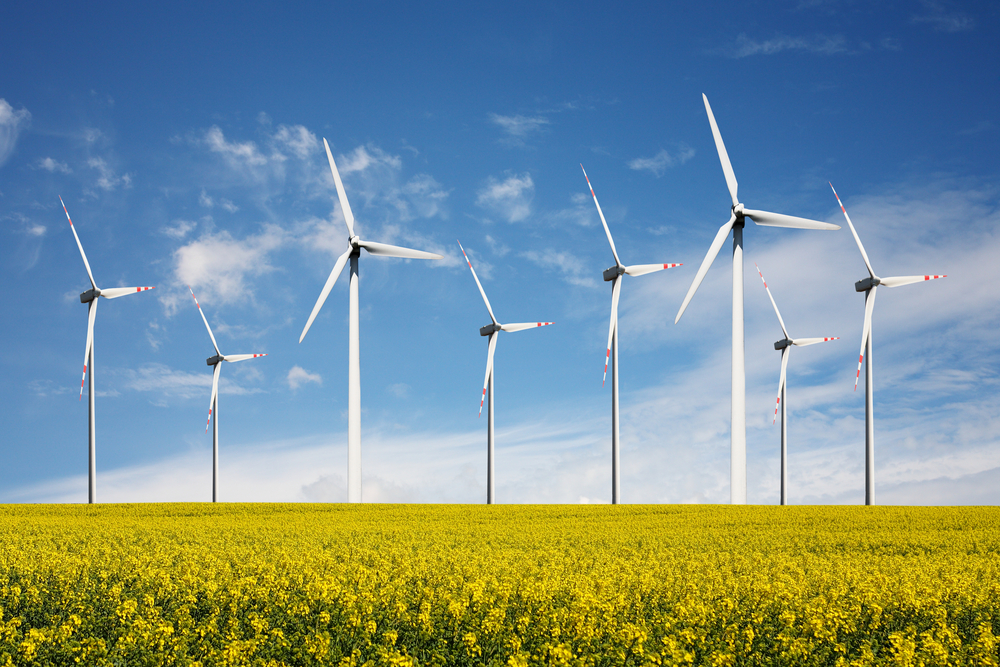
Wind is a renewable energy resource. This is because it is a resource that can be replenished.
When the wind turns the blades, this turns a turbine. The turbine turns a generator, generating electricity.
Another good example of a renewable energy resource is hydroelectric power.

Here, a dam is used to keep water back, with a lower reservoir of water on the other side.
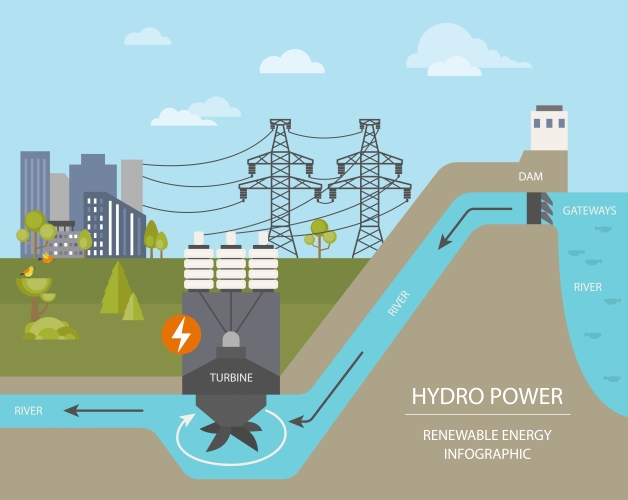
When the dam is opened, water flows and turns a turbine. This turns a generator, converting kinetic energy to electrical energy.
Geothermal energy is a renewable resource used in volcanic areas or areas with hot rocks underground.
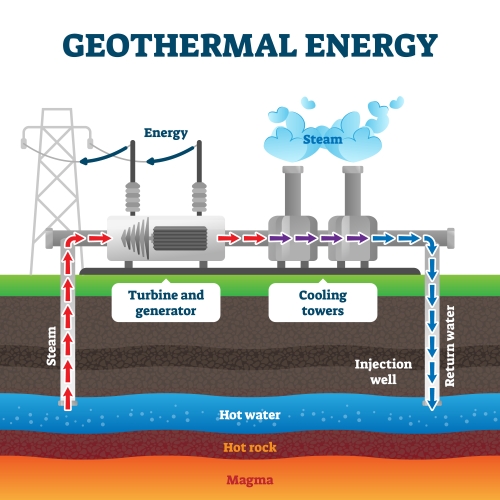
In certain parts of the world, like Iceland, the ground contains hot or volcanic rocks. These can heat water, producing steam. The steam can turn turbines and then generators, generating electricity.
Another renewable energy resource is solar cells or solar panels.
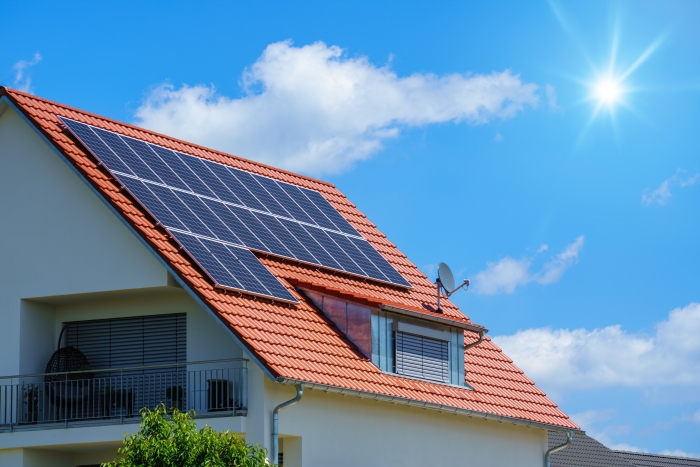
In this example, these solar cells convert light energy into electrical energy.
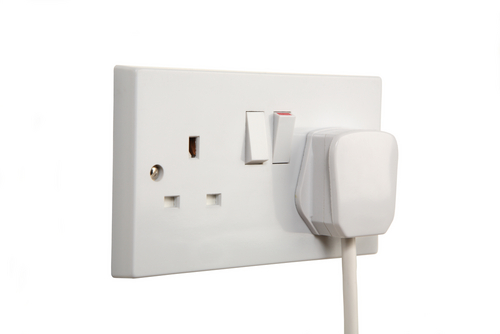
Here are some examples of the advantages and disadvantages of renewable energy resources.
Advantages
1. It is renewable - the resource will not run out.
2. Renewable energy resources do not produce carbon dioxide gas, so they do not affect global warming like fossil fuel does.
Disadvantages
1. The resources are not always reliable. For example, wind turbines do not generate electricity when there is no wind.
2. Some of these resources can harm the environment. For example, hydroelectric dams can have negative effects on habitats.
3. Location is important when it comes to renewable energy resources. For example, solar cells work best in countries with a lot of sunlight.
Let's try some questions!
You may well want to look back at some of this information. Just click on the red help button on the question screens and you'll be able to see this page again.

